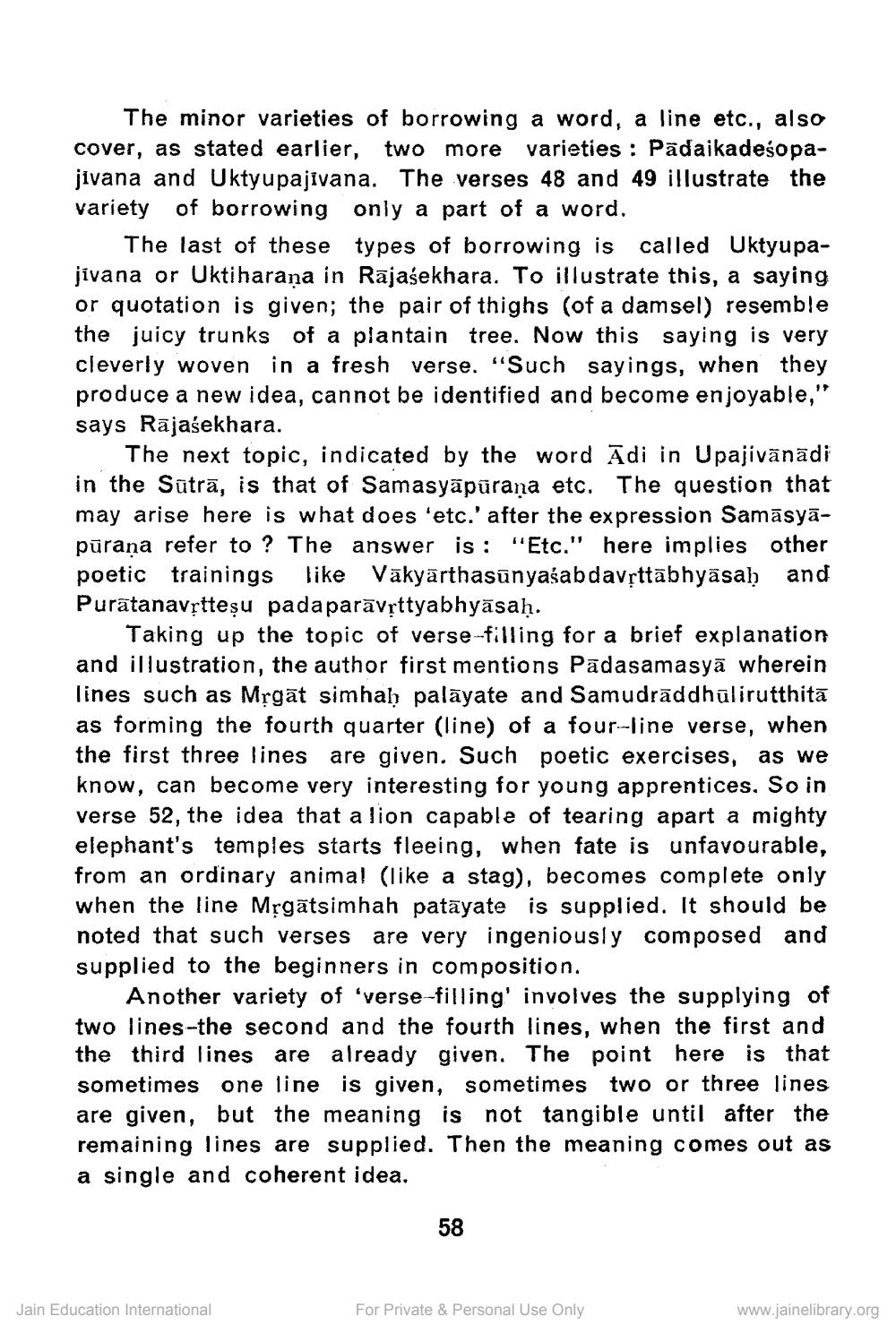________________
The minor varieties of borrowing a word, a line etc., also cover, as stated earlier, two more varieties: Padaikadesopajivana and Uktyupajivana. The verses 48 and 49 illustrate the variety of borrowing only a part of a word.
The last of these types of borrowing is called Uktyupajivana or Uktiharaṇa in Rajasekhara. To illustrate this, a saying or quotation is given; the pair of thighs (of a damsel) resemble the juicy trunks of a plantain tree. Now this saying is very cleverly woven in a fresh verse. "Such sayings, when they produce a new idea, cannot be identified and become enjoyable," says Rajasekhara.
The next topic, indicated by the word Adi in Upajivānādi in the Sūtrā, is that of Samasyāpūraṇa etc. The question that may arise here is what does 'etc.' after the expression Samāsyāpūraṇa refer to? The answer is: "Etc." here implies other poetic trainings like Vakyārthasūnyaśabdavṛttabhyasaḥ and Puratanavṛtteṣu pada paravṛttyabhyasaḥ.
Taking up the topic of verse-filling for a brief explanation and illustration, the author first mentions Pādasamasya wherein lines such as Mrgat simhaḥ palayate and Samudraddhulirutthita as forming the fourth quarter (line) of a four-line verse, when the first three lines are given. Such poetic exercises, as we know, can become very interesting for young apprentices. So in verse 52, the idea that a lion capable of tearing apart a mighty elephant's temples starts fleeing, when fate is unfavourable, from an ordinary animal (like a stag), becomes complete only when the line Mrgatsimhah patayate is supplied. It should be noted that such verses are very ingeniously composed and supplied to the beginners in composition.
Another variety of 'verse-filling' involves the supplying of two lines-the second and the fourth lines, when the first and the third lines are already given. The point here is that sometimes one line is given, sometimes two or three lines are given, but the meaning is not tangible until after the remaining lines are supplied. Then the meaning comes out as a single and coherent idea.
Jain Education International
58
For Private & Personal Use Only
www.jainelibrary.org




